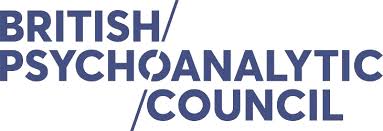Understanding Attachment-Based Therapy: A Path to Healing Through Connection
Attachment-Based Therapy is a form of psychotherapy rooted in attachment theory, which emphasizes the importance of early emotional bonds formed between children and their caregivers. Developed from the work of a British psychiatrist and psychoanalyst, John Bowlby, (1907-1990) this approach explores how early relationships influence an individual's ability to form secure, healthy connections later in life. Attachment-based therapy is especially useful for individuals who have experienced trauma, neglect, abuse, or loss during childhood.
Attachment theory is a way of understanding why people tend to make special relationships with specific others and how what happens in these relationships has an enormous impact on the emotional life, health and well-being of those involved.
At the core of attachment theory is the idea that humans are biologically wired for connection. When a caregiver is consistently responsive and emotionally available, the child is likely to develop a secure attachment style. This security becomes the foundation for healthy self-esteem, emotional regulation, and interpersonal relationships. On the other hand, inconsistent, absent, or harmful caregiving can lead to insecure or disorganized attachment styles, which may manifest as anxiety, difficulty trusting others, avoidance, or intense fear of abandonment in adulthood.
Attachment-based therapy aims to repair the wounds created by these early relational disruptions. It helps clients understand how their past relationships continue to affect their current behaviour, thoughts, and feelings—especially in close relationships. Therapists provide a secure, explorative and supportive environment where a person in therapy can explore painful experiences and begin to build new patterns of trust and connection.
Bowlby made valuable observations and links between early childhood deprivations and issues with mental health in adult life. His fascination was shared and followed by prominent researchers in the fields of developmental psychology, medical sociology and neurosciences who consolidated his ideas and scientific basis
When we try to make sense of our adult life and world of relationships, we need to also think about our early childhood experiences. Our early family life is hugely important for our later emotional functioning and behaviour. In this context, it makes sense to embark on an exploratory journey to discover meaningful links between then and now. This is what we call exploration of internal working models: how we unconsciously created internal maps of relationships that currently set us into autopilot mode.
These internal working models are both mental and physical. The attachment therapist both works with what is psychological and with bodily states and effects. This enables change at both levels of experience, which is necessary for the therapy to be successful
In the past 20 years, psychotherapists and psychiatrists have recognised that early childhood trauma is at the root of many problems in later life. Normally, the child does not know the cause of his/her suffering and cannot express it with words. People around him/her do not notice trauma. My work is informed by trauma studies. Many people show noticeable symptoms rooted in trauma. Others simply experience limitations in their lives and simply believe that this is the way things are and there is nothing to be done. Yet, these limitations are the result of trauma in early attachment relationships and can be resolved in therapy. Resolution means that trauma does no longer control one's life.
If you allow yourself to stay in the therapeutic process for some time, then you can expect to find ways of changing and living a more fulfilling life. One of the unique aspects of attachment-based therapy is its relational emphasis in understanding and treatment. The offers an inquiring mind stimulating joint and self -examination with developing understanding. I see therapy as a process that fundamentally involves a reflective dialogue between therapist and patient. Essentially being reflective is the capacity to take an observing perspective on yourself rather than be Soley immersed in your experience, seeing oneself from within and without. Sharing with your therapist the observation perspective and being able to see from this stance other people’s points of view and states of mind. This will enable you to incorporate and consider others’ when thinking and acting in the future. Developing a reflective capacity also involves the ability to be empathic, have integrity and acquire and retain respect for yourself and others.
In a world where many people feel disconnected or emotionally isolated, attachment-based therapy offers a path toward integration and greater connection with yourself and others.


